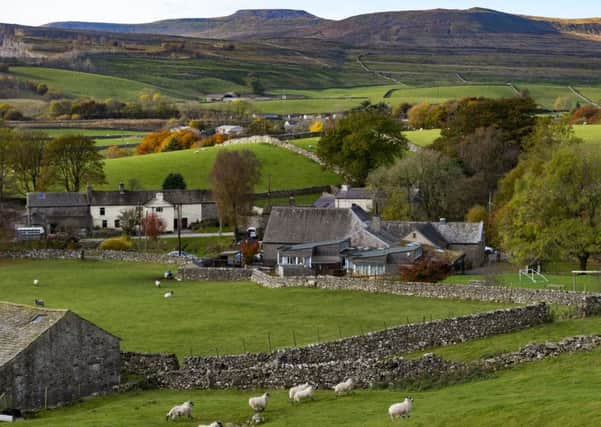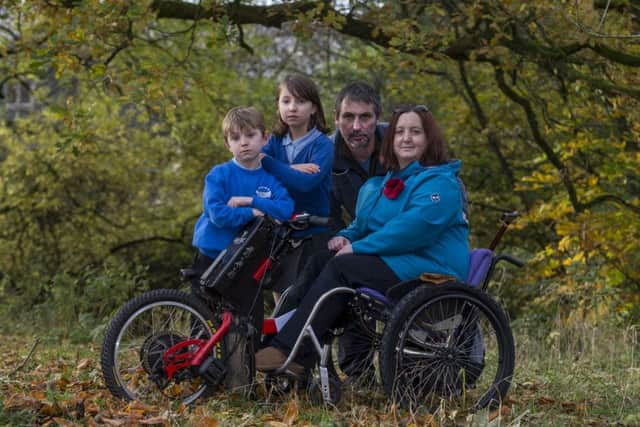Four North Yorkshire village primary schools to close - with fears more will follow


They have taught the basics of reading, writing and arithmetic for centuries but the numbers are no longer adding up for four North Yorkshire primary schools which are facing closure this year. A vicious circle of a lack of pupils and financial problems has been cited in each of the cases - and there are now fears more closures are on the cards.
North Yorkshire County Council has already confirmed it is shutting Horton-in-Ribblesdale Primary School in the Yorkshire Dales despite a community campaign to save it - while a final decision is to be taken later this month on a similar plan to shut Drax Community Primary School near Selby.
Advertisement
Hide AdAdvertisement
Hide AdRathmell Primary School in Settle is also consulting on closing its doors for good this summer.


A merger between Swainby and Potto CE Primary and Ingleby Arncliffe CE Primary, near Stokesley to form a single Church of England school on the Ingleby site under a new name is also under consideration.
It comes as it was warned more than 1,000 small rural schools face the prospect of cuts under the Government’s proposals for a national funding formula, leading to fears such changes will put the viability of many of them at risk.
North Yorkshire has the highest number of small schools in England, with 50 having fewer than 50 pupils. Suzanne Firth, strategic planning manager for North Yorkshire County Council, says while the authority recognises the importance of village schools to community life, society has changed greatly since the days in which they were first established.
Advertisement
Hide AdAdvertisement
Hide Ad“Some schools were established when all children walked to school or transport was by horse and cart. There is greater potential for children to travel a greater distance to go to school these days. Parents are quite used to transporting children to other activities. The idea that every single village will have a school isn’t necessarily a 21st Century model in that context.


“The more recent challenges are around the pressures there are on schools with some of the additional costs around things like National Insurance and pension contributions. These are things affecting all schools but affect smaller schools even more.
“The funding formula relies on a ‘per-pupil’ element and smaller schools are typically in rural settings with a population that is ageing in many cases. Some of that is to do with the availability of affordable housing and employment. It is not one single thing that has led to a decline in pupil numbers, it is a combination.”
She says it is uncertain if other schools will have to close, with Education Secretary Justine Greening insisting small rural schools will be protected through the new funding formula through “sparsity factor” payments.
Advertisement
Hide AdAdvertisement
Hide AdBut Ms Firth adds: “It does offer some hope for some very small schools. For some, it may not be enough.”
She says council analysis suggests children who are in year blocks of less than six pupils do not do as well as their peers and that closure decisions are only made having exhausted other options such as federation partnerships with other schools to share staff and resources.
“It is always a case of looking at what is right for those children in that area. We are always looking for local solutions and it is never one-size-fits-all. The hard fact of the matter is governing bodies have to set a balanced budget, they can’t operate with a deficit and our ability as a local authority to provide financial support to those that aren’t able to set a balanced budget is very restricted.”
Hilary Young, chair of governors at Rathmell Primary School, said in a letter announcing its closure plans last month: “Governors have taken this decision with deep sadness in response to financial and social factors beyond the control of any of us.”
Advertisement
Hide AdAdvertisement
Hide AdA consultation document said “pupil numbers have fallen to a level where it will be difficult to continue to provide a high quality of education”. The school has just 19 pupils and a consultation on its closure will end on Thursday.
Councillors will separately decide on whether to close Drax Community Primary School next Tuesday. It has seen pupil numbers reduce from 52 just three years ago to only 10 currently and is forecast to run up a budget deficit of almost £100,000 next year if it stays open.
But a council report said: “During the consultation period, concerns have been voiced about the impact on the community if the school closed. These include a concern that the village has little or no spirit left and that people within the community are not being encouraged to come together and unite.
“The feeling is that the closure of the school would only add to this demise. Another concern raised is that a closure of the school would worsen the economic development of the area as young families would be less likely to move into the community.
Advertisement
Hide AdAdvertisement
Hide Ad“The impact of this is thought to potentially reduce the skills of the workforce in the area, hindering development and impacting on local businesses. There was also concern about the loss of village history and tradition the closure of the school would bring.”
The Swainby and Potto Church of England Primary School is also due to close its doors for good this summer as it is merged with Ingleby Arncliffe Primary School.
It is intended a renamed primary school called Mount Grace will operate on the existing Ingleby Arncliffe school site.
A report said that with just 14 children at the Swainby and Potto school and only 12 enrolled at Ingleby Arncliffe, “it is considered that there are too few pupils to justify the continued need for two separate schools”.
Advertisement
Hide AdAdvertisement
Hide AdThere are growing concerns other schools may soon follow in the footsteps of those preparing to close. In December, the National Audit Office warned English schools will need to find £3bn in savings by 2020, with budget cuts of eight per cent.
Anne Swift, president of the National Union of Teachers and former headteacher of Gladstone Road Primary in Scarborough, said: “People say once the post office, pub and school have closed, a village has lost its heart. It would be good to maintain schools but has to be done in a cost-effective way.”
Mrs Swift believes the £320m being directed by the Government to opening new free schools should instead be spent on existing institutions. “North Yorkshire historically has been under-funded in comparison with other areas of the country. The total funding pot is too small. The new formula doesn’t take into account some of the rising cost pressures, so it is still a cut overall.
“The net effect is schools are losing funding to the point where some will not be viable. In rural schools, any loss has a bigger impact. You have only got to have one family leave a village to make a class not viable.”
Advertisement
Hide AdAdvertisement
Hide AdMeanwhile, those living in villages where schools are already due to close fear for the future of their local communities. Jonty Rhodes, a parent at Horton-in-Ribblesdale School, says he already knows of people who have cancelled plans to move to the village because of the school closure proposals.
“There is not a lot happening in the village any more. The Post Office and shop have closed. If they close the school, who is going to move here of child-bearing age? Every house gets sold as a retirement home or a holiday cottage. It is another nail in the coffin of the village.”
Jonty says an appeal has been lodged against the closure but accepts there is a limited chance of success. “It is pretty much the last roll of the dice.”
Rural schools ‘will be protected’
The Government has insisted rural school are being protected through its education funding shake-up.
Advertisement
Hide AdAdvertisement
Hide AdThe proposals for a national funding formula are designed to tackle a “postcode lottery” in school funding and include extra cash to take account of ‘sparsity’ - measuring the number of pupils and distance from neighbouring schools.
Under the current plans, England’s small schools in rural locations will gain an average 1.3 per cent.
Education Secretary Justine Greening has previously said: “Our school funding system as it exists today is unfair, opaque and outdated. The reality is that patchy and inconsistent decisions on funding have built up over many years, based on data that are sometimes a decade or more out of date.”